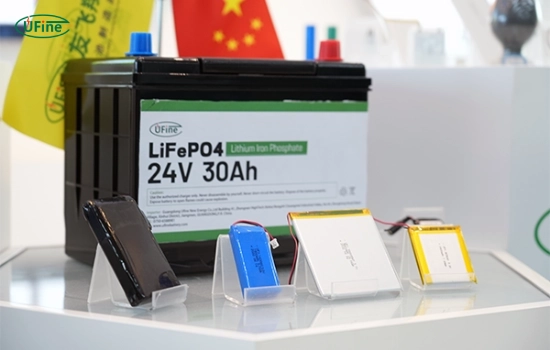Electric bikes (e-bikes) are becoming increasingly popular as a sustainable and efficient mode of transportation. However, one of the most critical components of an e-bike is its battery. Maximizing battery life and performance can significantly enhance your riding experience. This article will explore various aspects of e-bike batteries, including their lifespan, maintenance, and tips for extending their longevity.
Part 1. What is an electric bike battery?
An electric bike battery is a rechargeable power source that provides energy to the bike’s electric motor. Most modern e-bikes use lithium-ion batteries due to their high energy density, lightweight nature, and ability to hold a charge for extended periods. These batteries typically come in various voltages, with 36V and 48V being the most common.
Key Features of Electric Bike Batteries
- Capacity: Measured in amp-hours (Ah), this indicates how much energy the battery can store. Higher capacity means longer riding distances.
- Voltage: This affects the power output of the motor. Higher voltage batteries can provide more power, leading to faster speeds.
- Cycle Life refers to the number of complete charge and discharge cycles a battery can undergo before its capacity significantly diminishes. Most lithium-ion batteries last between 500 and 1,000 cycles.
Part 2. How long do electric bike batteries last?
The lifespan of an electric bike battery varies based on several factors, including the type of battery, usage patterns, and maintenance practices. On average, e-bike batteries can last between 2 to 5 years.
Factors Influencing Battery Lifespan
- Battery Type: Lithium-ion batteries are the most common and generally last longer than lead-acid batteries.
- Usage: Frequent use, especially with high power settings, can lead to quicker battery degradation.
- Charging Habits: How you charge your battery significantly affects its lifespan. Overcharging or consistently discharging it to 0% can shorten its life.
Part 3. How to maximize electric bike battery life?
Maximizing the lifespan of your e-bike battery involves adopting good habits and practices. Here are some effective strategies:
Proper Charging Techniques
- Avoid Full Discharges: Try not to let your battery discharge completely. Keeping it above 20% charge can help prolong its life.
- Use the Right Charger: Always use the charger that comes with your e-bike. Using an incompatible charger can damage the battery.
- Charge After Each Ride: To maintain optimal battery health, charge your battery after every ride, even if it’s just a short trip.
Storage Practices
- Store in a Cool, Dry Place: Extreme temperatures can harm battery health. Store your battery in a relaxed, dry environment, ideally between 20°C to 25°C (68°F to 77°F).
- Monthly Maintenance: If you’re storing your e-bike for an extended period, charge the battery monthly to keep it healthy.
Part 4. How do temperature and environment affect battery performance?
Temperature plays a crucial role in battery performance. Here’s how:
Cold Weather
- Reduced Capacity: In cold conditions, the battery’s chemical reactions slow down, reducing capacity and performance.
- Increased Resistance: Cold temperatures can increase internal resistance, which may lead to a drop in power output.
Hot Weather
- Risk of Overheating: High temperatures can cause batteries to overheat, potentially leading to thermal runaway, a severe safety risk.
- Decreased Lifespan: Consistent exposure to high temperatures can accelerate the battery’s aging process.
Part 5. What are the signs of a failing electric bike battery?
Recognizing the signs of a failing battery is essential for maintaining your e-bike’s performance. Common indicators include:
- Decreased Range: If you notice a significant drop in how far you can ride on a full charge, it may be time to replace your battery.
- Longer Charging Times: If your battery takes longer than usual, it could be a sign of wear.
- Physical Damage: Cracks, swelling, or other physical damage to the battery casing are critical signs that it needs to be replaced.
Part 6. Can electric bike batteries be replaced?
Yes, electric bike batteries can be replaced. Most manufacturers offer replacement batteries, and many e-bikes are designed for easy battery removal. When replacing your battery, consider the following:
- Compatibility: Ensure the new battery is compatible with your e-bike model.
- Quality: Opt for high-quality batteries from reputable manufacturers to ensure safety and longevity.
- Warranty: Check if the new battery has a warranty for added peace of mind.
Part 7. What are the best practices for electric bike battery maintenance?
Maintaining your e-bike battery is crucial for maximizing its lifespan. Here are some best practices:
- Regular Inspections: Periodically check your battery for any signs of wear or damage.
- Clean Connections: Ensure the battery terminals and connections are clean and corrosion-free.
- Avoid Water Exposure: Keep the battery dry and avoid exposing it to water or moisture.
Part 8. How do different riding styles affect battery life?
Your riding style can significantly impact battery life. Here’s how:
- Aggressive Riding: High-speed riding and frequent acceleration can drain the battery faster.
- Pedal Assist Levels: Higher pedal assist levels will consume more battery power. Consider using lower settings for longer rides.
- Terrain: Riding on steep hills or rough terrain requires more power, which can lead to quicker battery depletion.
Part 9. What are the most common types of electric bike batteries?
Understanding the different types of e-bike batteries can help you make informed decisions. The most common types include:
- Lithium-ion Batteries: The most popular choice for e-bikes due to their high energy density and lightweight design.
- Lead-acid Batteries: Older technology that is heavier and less efficient than lithium-ion options.
- Nickel-metal Hydride (NiMH) Batteries: Less standard but still used in some e-bikes, balancing weight and performance.
Part 10. FAQs
-
What factors affect the charging time of an electric bike battery?
Charging time can vary based on battery capacity, charger specifications, and the current state of charge. Generally, a standard lithium-ion battery takes 4 to 8 hours to fully charge. -
How can I tell if my electric bike battery is fully charged?
Most e-bike batteries come with an indicator light that shows the charging status. A solid green light typically indicates a full charge, while other colors may indicate different charge levels. -
Is it safe to leave my electric bike battery plugged in overnight?
While most modern chargers are designed to prevent overcharging, it’s generally best to unplug the battery once fully charged to avoid potential risks and prolong battery life. -
Can I use my electric bike in the rain without damaging the battery?
Yes, most e-bike batteries are designed to be water-resistant. However, to prevent moisture-related issues, it’s essential to ensure that the battery and connections are properly sealed and dry. -
What should I do if my electric bike battery loses its charge quickly?
If your battery drains faster than usual, check for potential issues such as damaged connections or excessive use of high power settings, or consider getting the battery tested for capacity degradation.
Related Tags:
More Articles

Aluminum Air Battery Design: Materials, Assembly & Efficiency Tips
An aluminum air battery uses aluminum and air to generate power. Learn its materials, assembly steps, and tips to boost energy output and efficiency.
7 Advantages of a Heated Lithium Battery in Cold Climates
Looking to power batteries in freezing temps? Heated lithium batteries excel in cold climates. Here are 7 key benefits and how they work.
How to Choose the Best Floor Scrubber Battery for Commercial Cleaning?
Selecting the ideal floor scrubber battery ensures a long runtime, rapid charging, and minimal maintenance for efficient commercial cleaning operations.
Battery for Blower vs Battery for Leaf Vacuum: Which One Should You Choose?
Battery for blower vs leaf vacuum—learn the key differences in power, fit, and runtime to choose the right battery for your outdoor tool needs.
How to Choose the Right Battery for Blower?
Choosing the right blower battery? Consider voltage, capacity, chemistry & usage. This guide helps match the best battery for peak performance.





